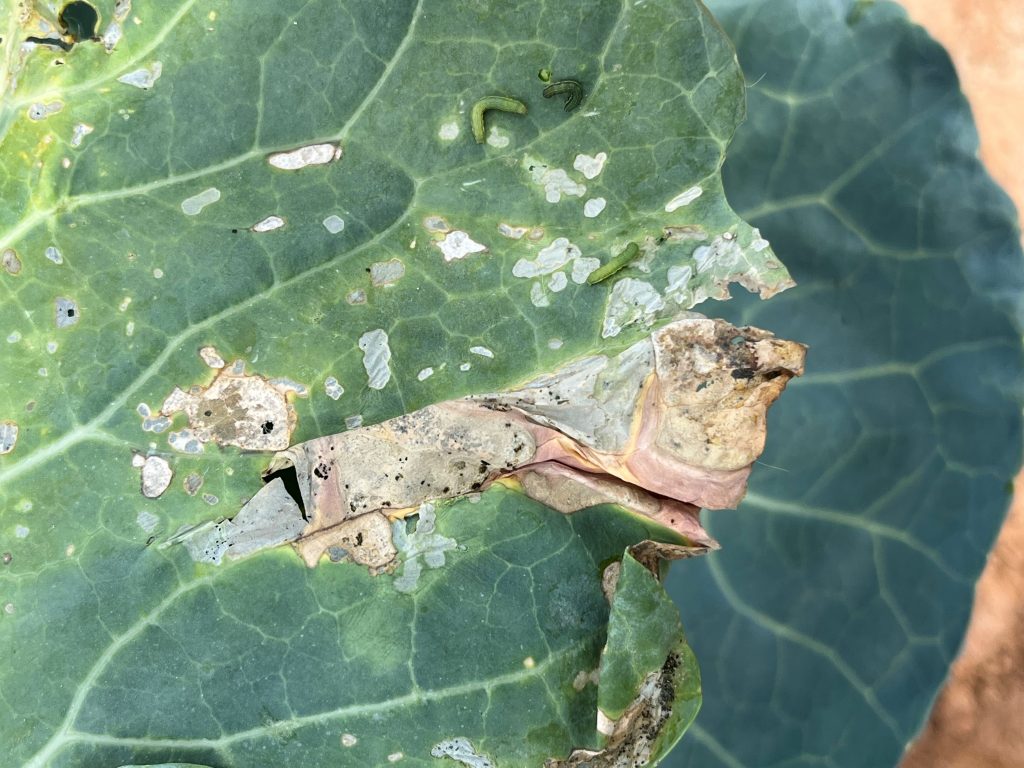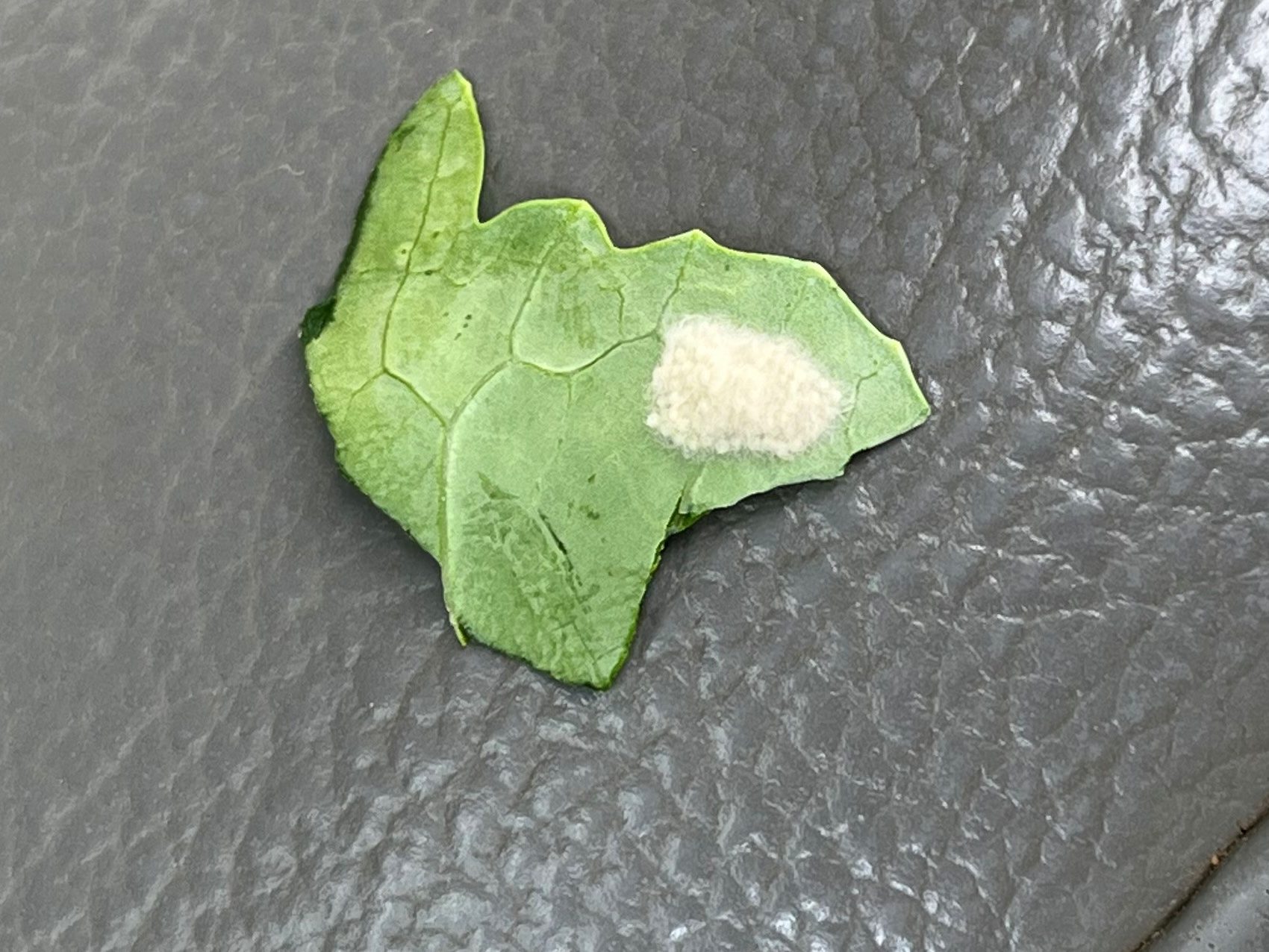This week I visited several vegetable farms in southside (southcentral) Virginia and found beet armyworm infestations at all of the farms. This is not good news as this insect pest can be difficult to control. One field of Brussels sprouts had been sprayed with a pyrethroid and with Lannate the spray before and had a healthy population of beet armyworms doing a lot of damage (see photo). I saw mostly young larvae and even some egg masses (see photo). Based on my experience, this pest is resistant to those two classes of insecticides.

History and Pest Status of the Beet Armyworm in the U.S.
The beet armyworm (BAW) is a widely distributed polyphagous insect pest of >90 species of plants and cultivated crops, including alfalfa, asparagus, bean, beet, broccoli, cabbage, cauliflower, celery, chickpea, corn, cotton, cowpea, eggplant, lettuce, onion, pea, peanut, pepper, potato, radish, safflower, sorghum, soybean, spinach, sugarbeet, sweetpotato, tobacco, tomato, and turnip. The insect also feeds on fruit and ornamental plants. The BAW is native to Southeast Asia, but has spread throughout much of the world. It was first discovered in North America in the late 1800’s on the west coast, and reached the southeastern U.S. by the 1920’s. As it is a tropical insect, it lacks a diapause and ability to overwinter in colder (temperate) climates. High populations of BAW occur in the southeastern and southwestern states in the spring, and highly mobile migrants usually make their way northward each summer to the Mid-Atlantic states, Colorado, and northern California. Occasionally the pest is found as far north as New York and even Canada.
Damage

BAW larvae feed on foliage and fruit. When they are young, larvae feed gregariously, usually in great numbers, where they skeletonize and web leaves. As they mature, larvae devour more foliage and may burrow into fruit or heads of plants. When BAW outbreaks occur in a region, they are conspicuous and often become the primary pest control focus of growers of numerous field and vegetable crops because of the sheer numbers of larvae and their ability to move from crop to crop. If they are not controlled, BAW infestations can sometimes result in total crop losses. The insects have a high reproductive potential; eggs are laid in clusters of 50 to 150 eggs, and female moths can produce over 1300 eggs in a lifetime. In addition, eggs are well protected from the environment and predators because they are usually deposited on the undersides of leaves and are covered with cottony scales deposited by the female moth. This usually results in numerous larvae infesting a single plant after egg hatch.
Insecticide Resistance in the Beet Armyworm
BAW has a high propensity for developing resistance to insecticides. In the southeast and southwestern states, the relatively high abundance of BAW coupled with large acreages of valuable crops has stimulated a long history of intense insecticide use . Not surprisingly, this has resulted in the development of resistance to a diverse array of pesticide classes, including chlorinated hydrocarbons, organophosphates, carbamates, pyrethroids, and benzoylphenylureas. Some recommended insecticide options include the diamides such as Coragen, Harvanta, Beseige, Elevest, etc.., spinosyns like Radiant or Blackhawk or Entrust for organic growers. Bt products like Dipel, Agree, Xentari, Javelin, Deliver, etc.. will provide very good control of small larvae. Proclaim and Avaunt are also effective products from past efficacy trials.
